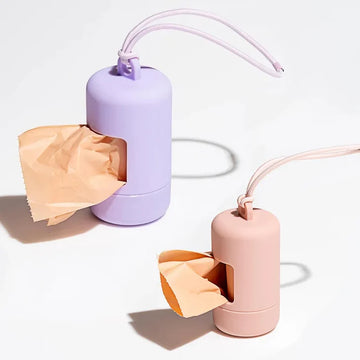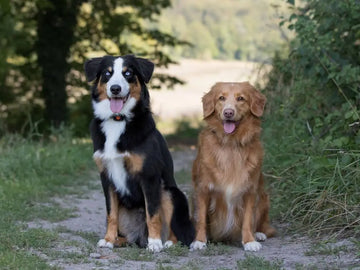Potty training is one of the first and most important lessons for a dog, shaping their behavior and creating harmony in your home. For new dog owners, the process may seem daunting, but with the right timing, patience, and preparation, success is within reach. This guide will walk you through the best time to start potty training, effective techniques, and essential tools like dog supplies to make the journey smoother.
When Should You Start Potty Training?
The ideal time to start potty training a dog is between 12 and 16 weeks of age. Puppies at this stage begin to develop bladder and bowel control, allowing them to hold their needs for short periods. Starting earlier can be ineffective, as puppies under 12 weeks may lack the physical capability to manage elimination.
For adult dogs, potty training might be necessary if they are rescues or come from environments with no prior training. In such cases, the key is patience, as it may take more time to unlearn old habits.
Why Timing is Crucial
Timing plays a critical role in how quickly your dog adapts to potty training. Beginning too early could lead to frustration for both you and your puppy, as they simply aren’t ready to grasp the concept. On the other hand, waiting too long can make it harder to break bad habits.
Training schedules that align with your dog’s eating, sleeping, and activity patterns can greatly improve the process. Puppies generally need to relieve themselves:
- Right after waking up
- After eating or drinking
- Following a play session
- Before bedtime
How to Potty Train Your Dog: Step-by-Step Guide
1. Create a Routine
Dogs thrive on consistency. Setting a structured routine teaches them when and where to relieve themselves. Take your dog out at regular intervals, especially after meals or naps. Use the same door and area for every potty break to establish familiarity.
2. Choose the Right Supplies
Investing in essential dog supplies can make potty training easier. Items like training pads, crates, and leashes are invaluable tools. A crate can help create a safe space for your dog, encouraging them to hold their bladder when confined. Training pads are excellent for indoor use, especially for young puppies who might not make it outside in time.
3. Use Verbal Cues and Rewards
Choose a command like "go potty" and use it consistently during training. When your dog successfully eliminates in the right spot, immediately reward them with praise, treats, or affection. Positive reinforcement helps them associate good behavior with rewards, speeding up the learning process.
4. Supervise and Limit Access
Keep a close eye on your dog during the training period. Supervision prevents accidents and allows you to guide them to the correct spot. For puppies, limiting their space with baby gates or playpens can reduce accidents.
Managing Accidents
Even with the best efforts, accidents are bound to happen. Addressing them appropriately is key to maintaining progress:
- Stay Calm: Avoid punishing your dog for accidents, as it may create fear or confusion.
- Clean Thoroughly: Use proper dog cleaning supplies to remove stains and odors. This prevents your dog from being drawn back to the same spot by lingering smells.
- Learn from Patterns: If accidents occur frequently, adjust the schedule or watch for signs that your dog needs to go, such as sniffing or circling.
Special Considerations for Potty Training Adult Dogs
Adult dogs might face unique challenges, especially if they have a history of improper training. In such cases:
- Start with the same structured routine as you would for a puppy.
- Be patient, as it might take longer for them to adapt.
- Use a combination of positive reinforcement and behavior management techniques.
Why Dog Cleaning is Essential During Potty Training
Potty training inevitably comes with its fair share of messes. Proper cleaning is vital to maintain hygiene and eliminate odors that could confuse your dog. Investing in high-quality dog cleaning supplies like enzymatic cleaners ensures effective removal of stains and smells. These products are specifically designed for pet-related accidents, making them a must-have for any dog owner.
Regular cleaning also keeps your living space fresh and reduces the chances of your dog returning to soiled areas. For outdoor potty areas, rinsing with water or using pet-safe disinfectants can maintain cleanliness.
Tips for Success
1. Stay Consistent
Routine is everything. Stick to the same schedule, commands, and reward system to reinforce the desired behavior.
2. Celebrate Small Wins
Every successful potty break is a step forward. Celebrate these moments with enthusiasm to encourage your dog.
3. Be Patient
Potty training is a process, and every dog learns at their own pace. Don’t let setbacks discourage you. Instead, treat them as opportunities to refine your approach.
Common Challenges and How to Overcome Them
- Frequent Accidents Indoors: If accidents persist, revisit your schedule. Ensure your dog has frequent potty breaks, especially during early training.
- Anxiety or Fear: Dogs who are nervous may resist going outside. Creating a calm and positive environment can help alleviate their stress.
- Relapses: Even well-trained dogs might have occasional accidents. Reaffirm training basics to get them back on track.
Why Proper Dog Supplies Make a Difference
Equipping yourself with the right dog supplies is essential for effective potty training. Training pads, cleaning sprays, and poop bags are just the start. A sturdy leash and harness allow you to guide your dog outdoors safely, while treats for positive reinforcement keep motivation high. Having these items on hand ensures you're always prepared, making the process more manageable.
Final Thoughts
Potty training your dog is a journey that requires time, effort, and the right tools. By starting at the right age, using positive reinforcement, and incorporating essential supplies like dog cleaning products and training tools, you can set your furry friend up for success. Every dog is unique, so flexibility and patience are your greatest assets. With consistent effort, your dog will soon master this important skill, ensuring a happy and clean home for years to come.










